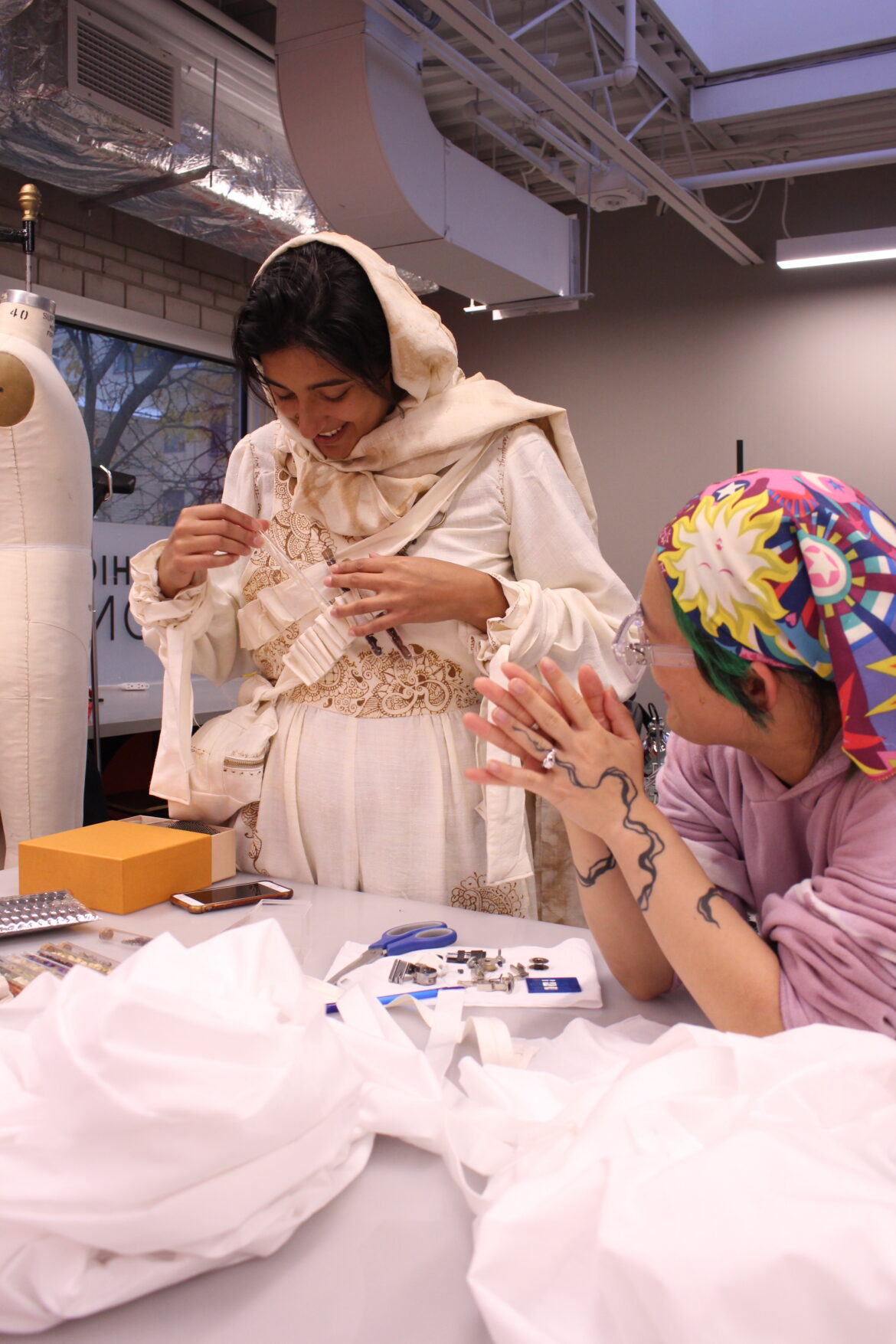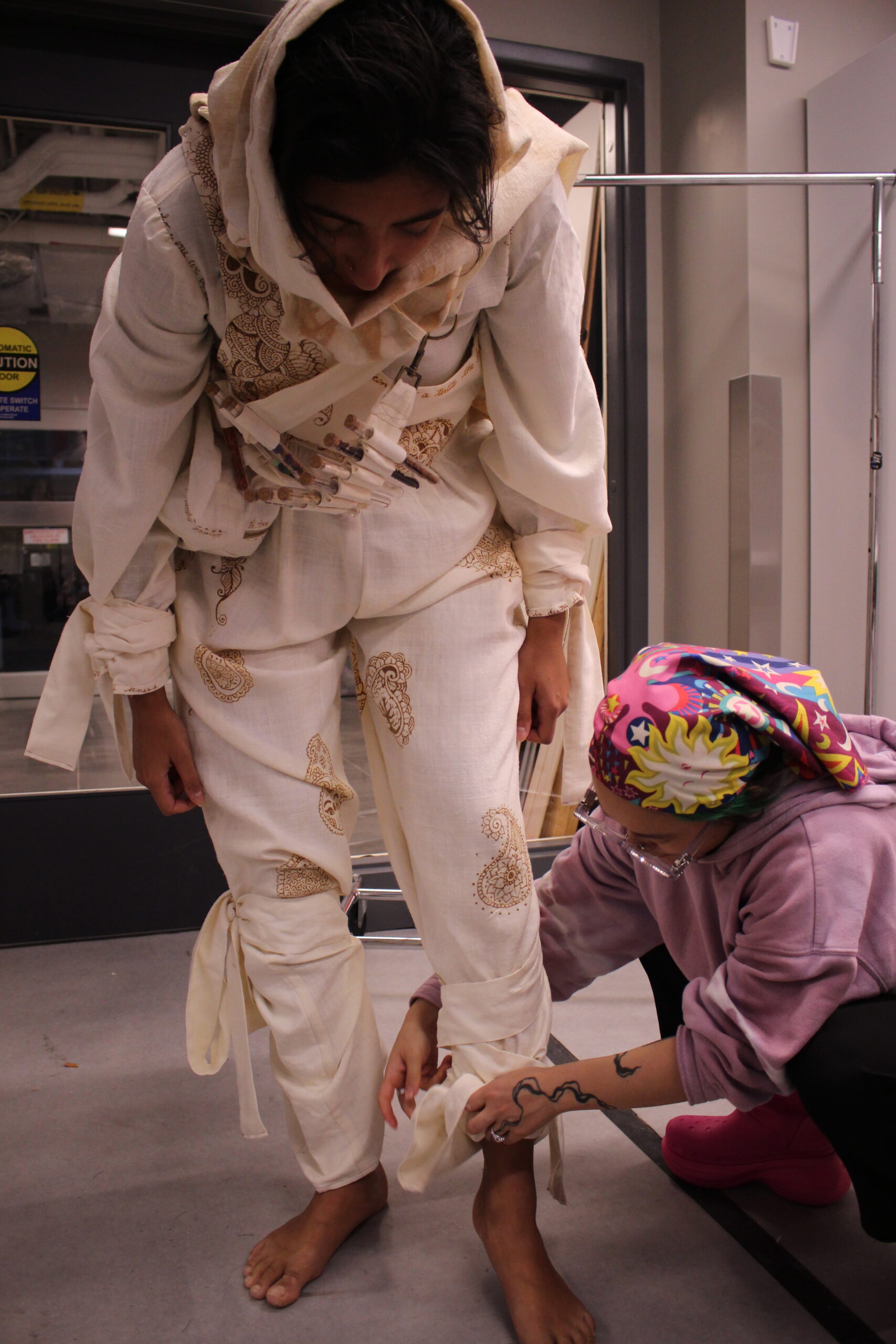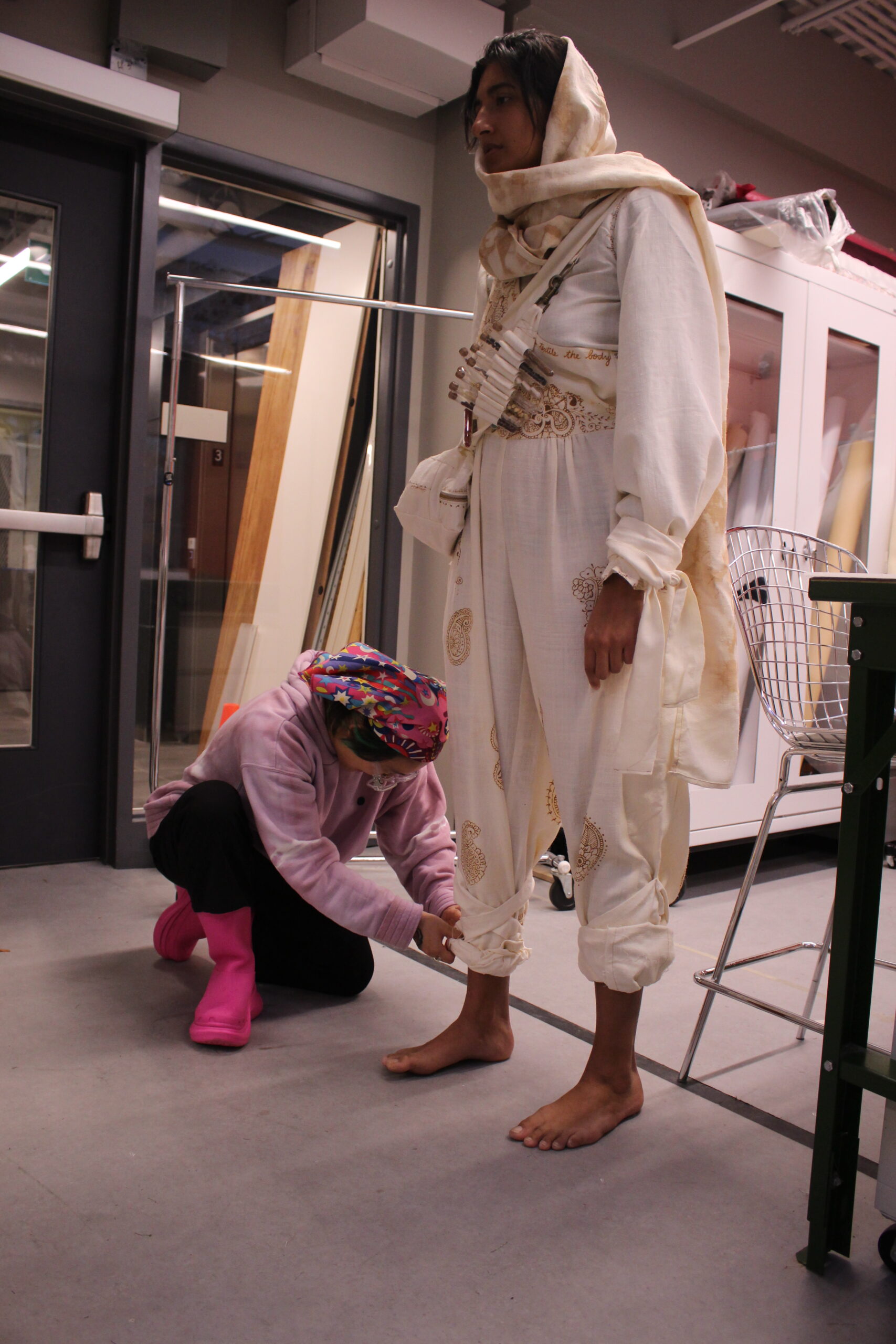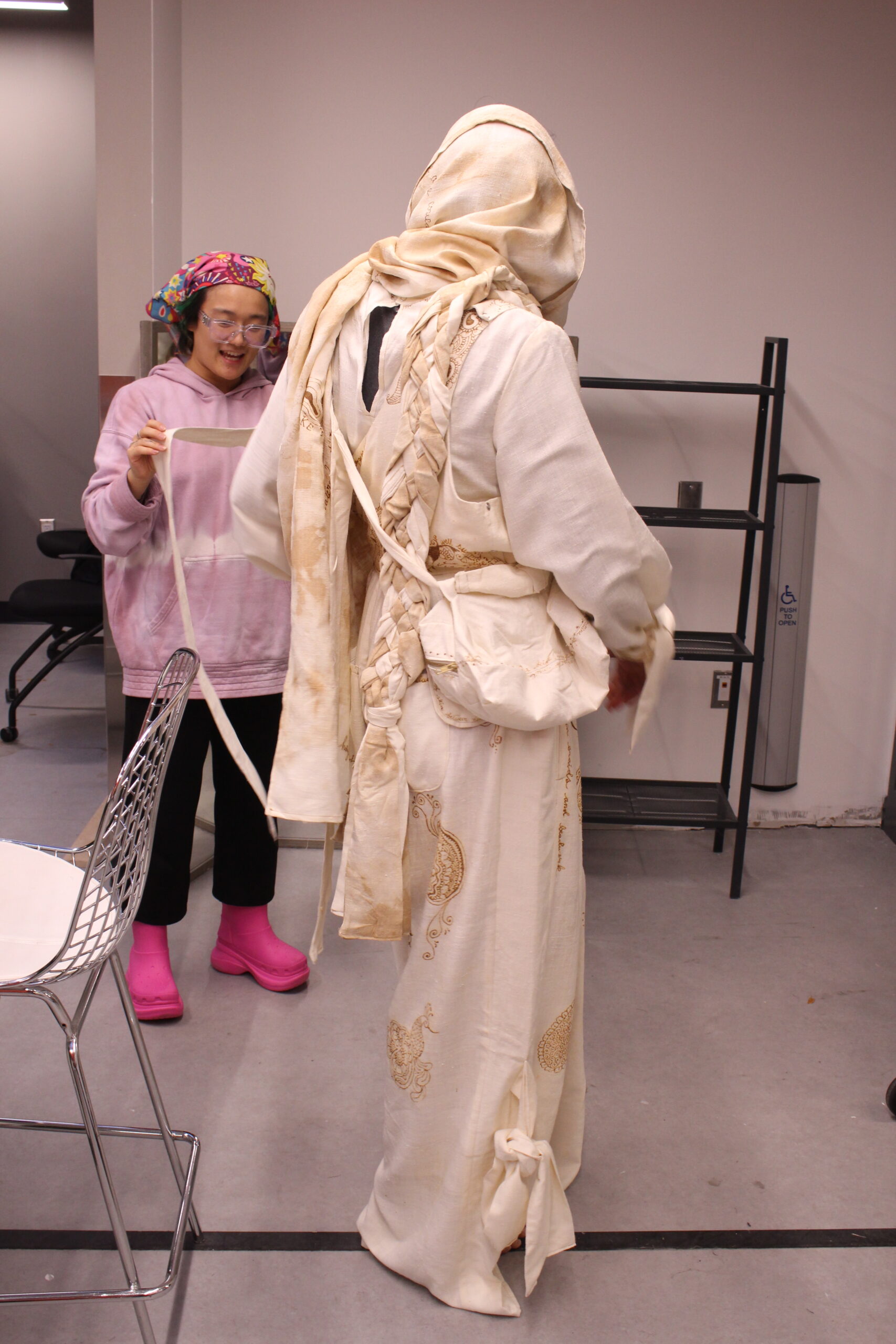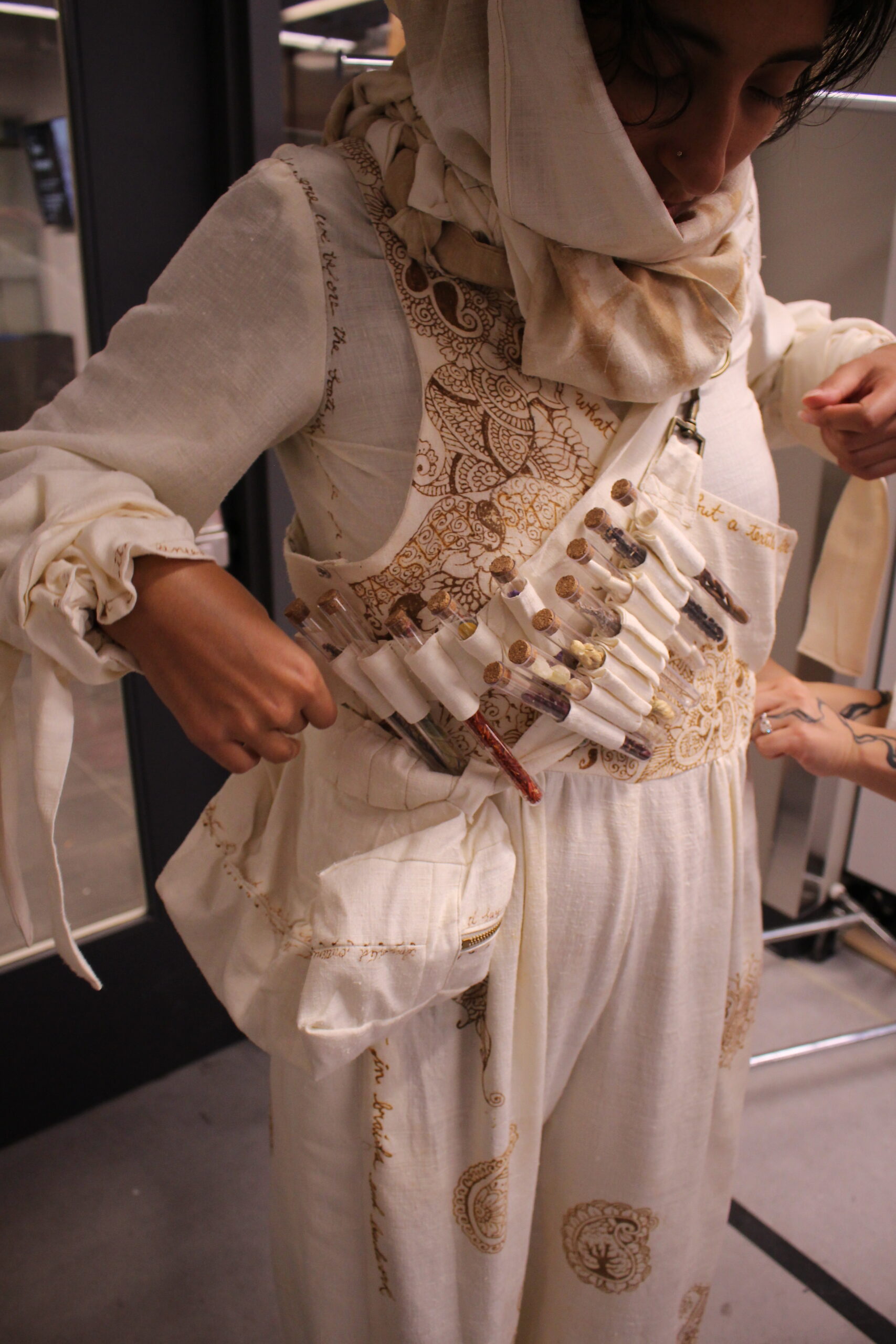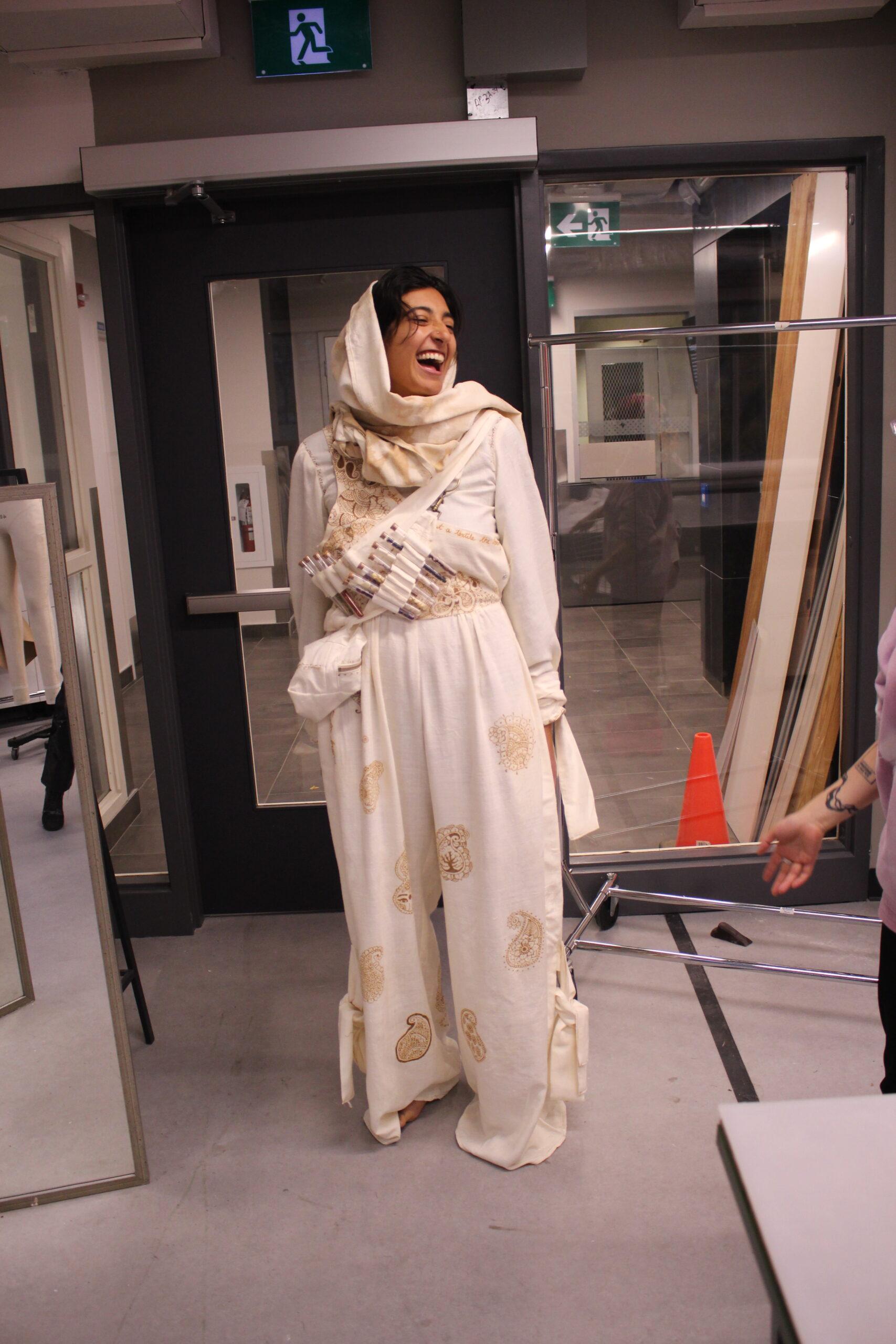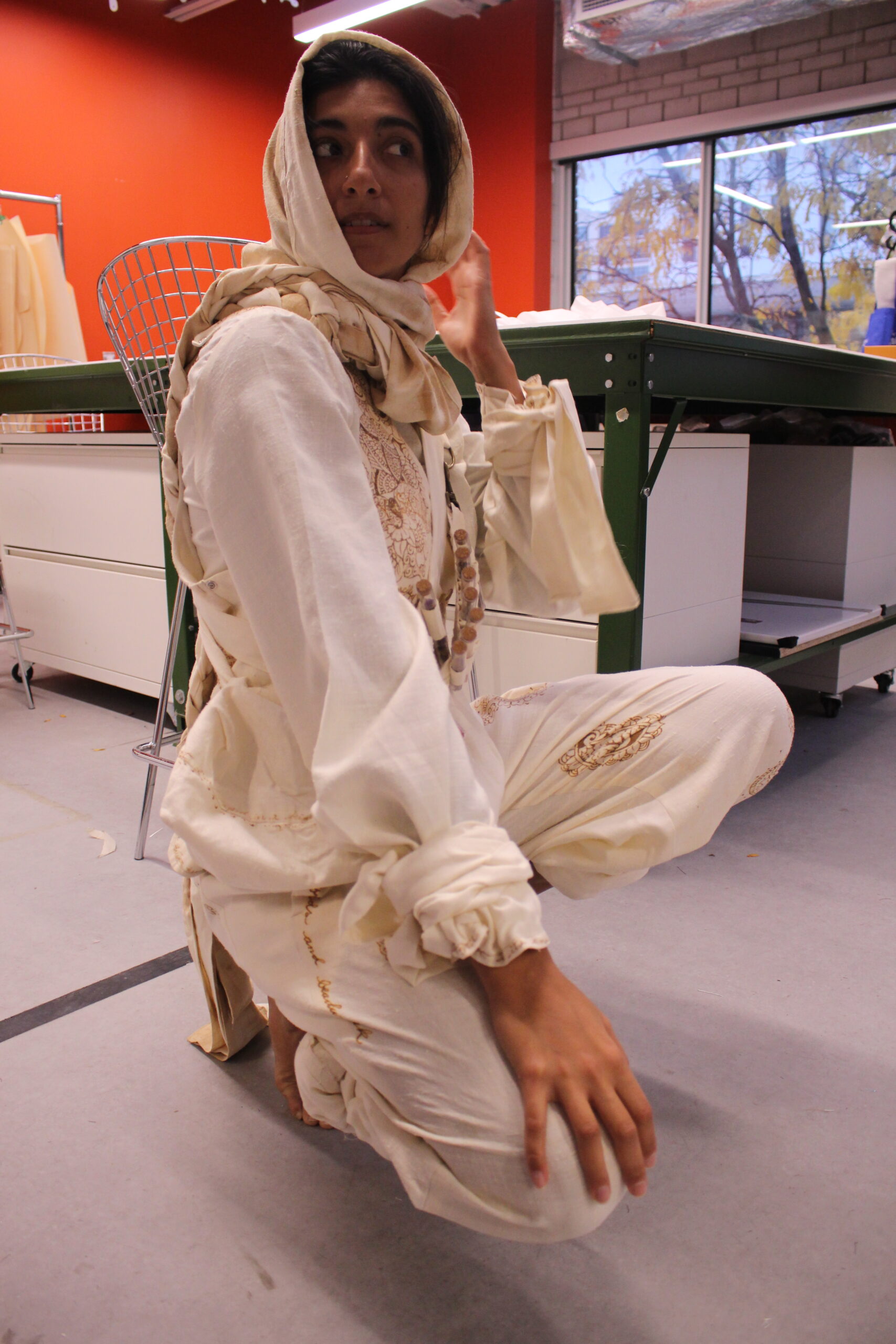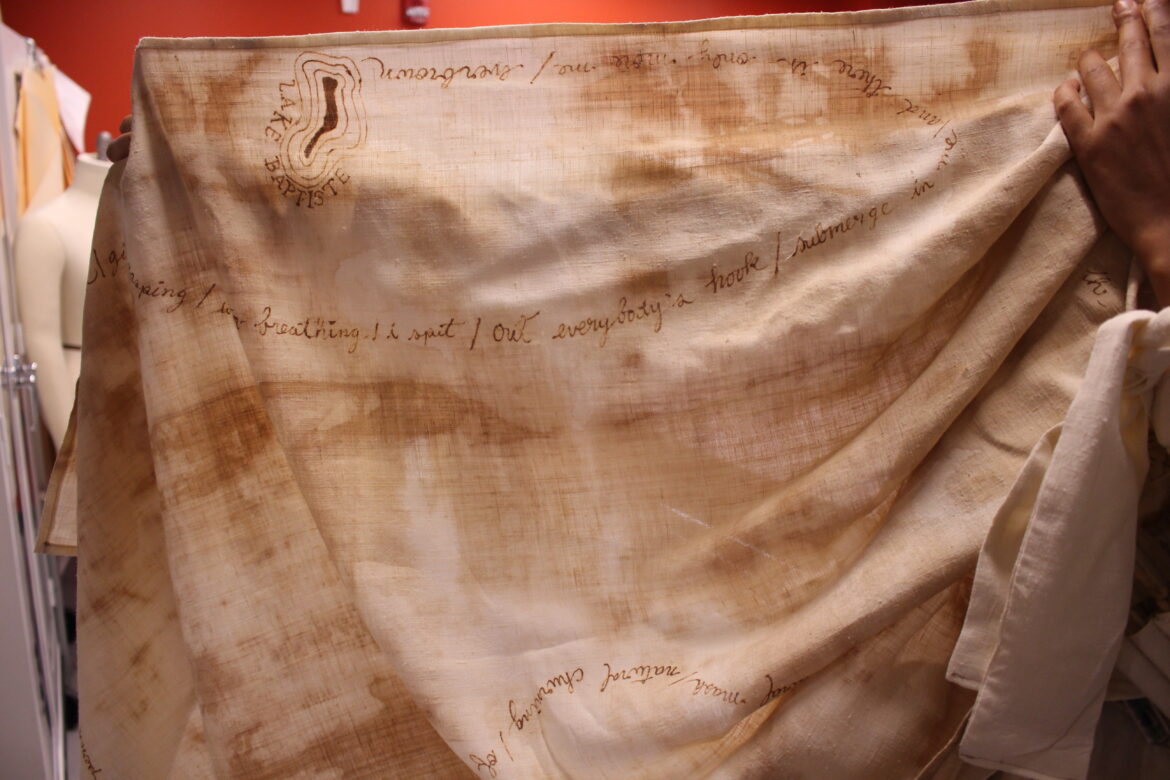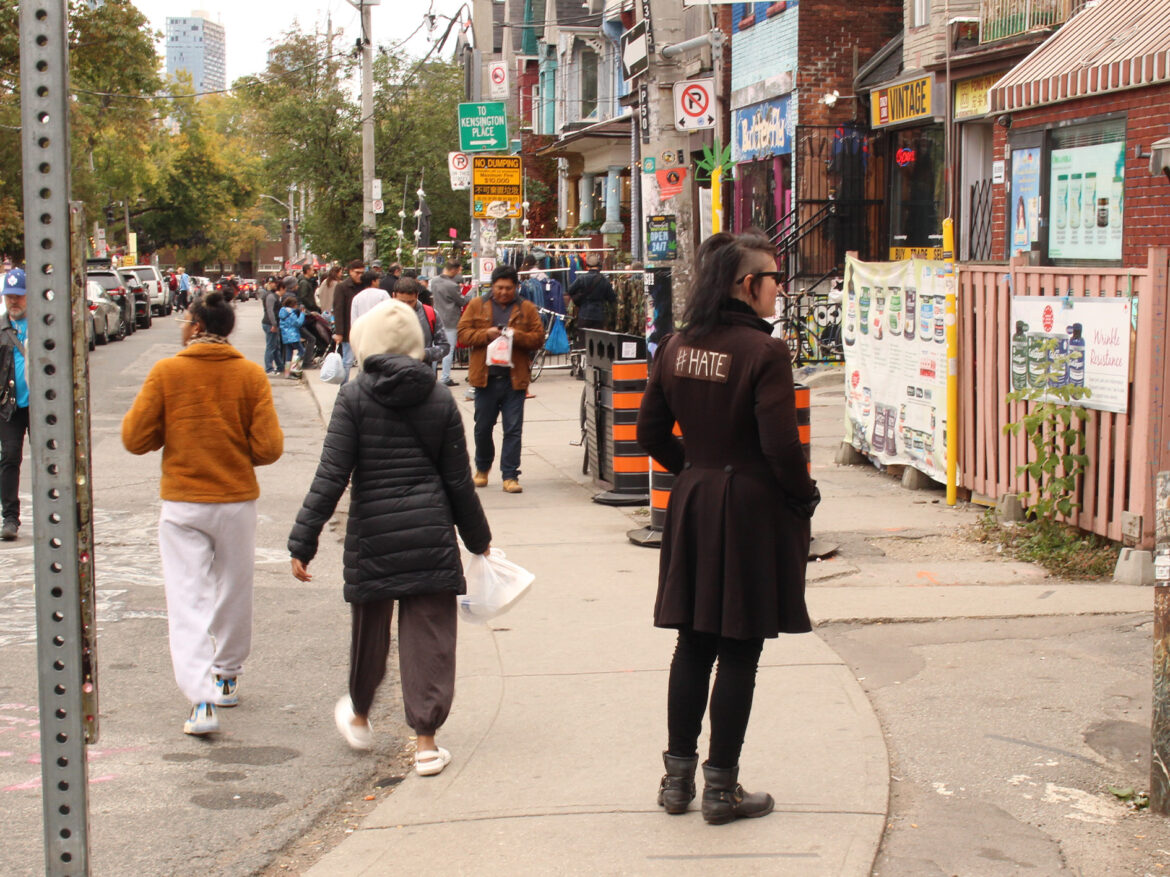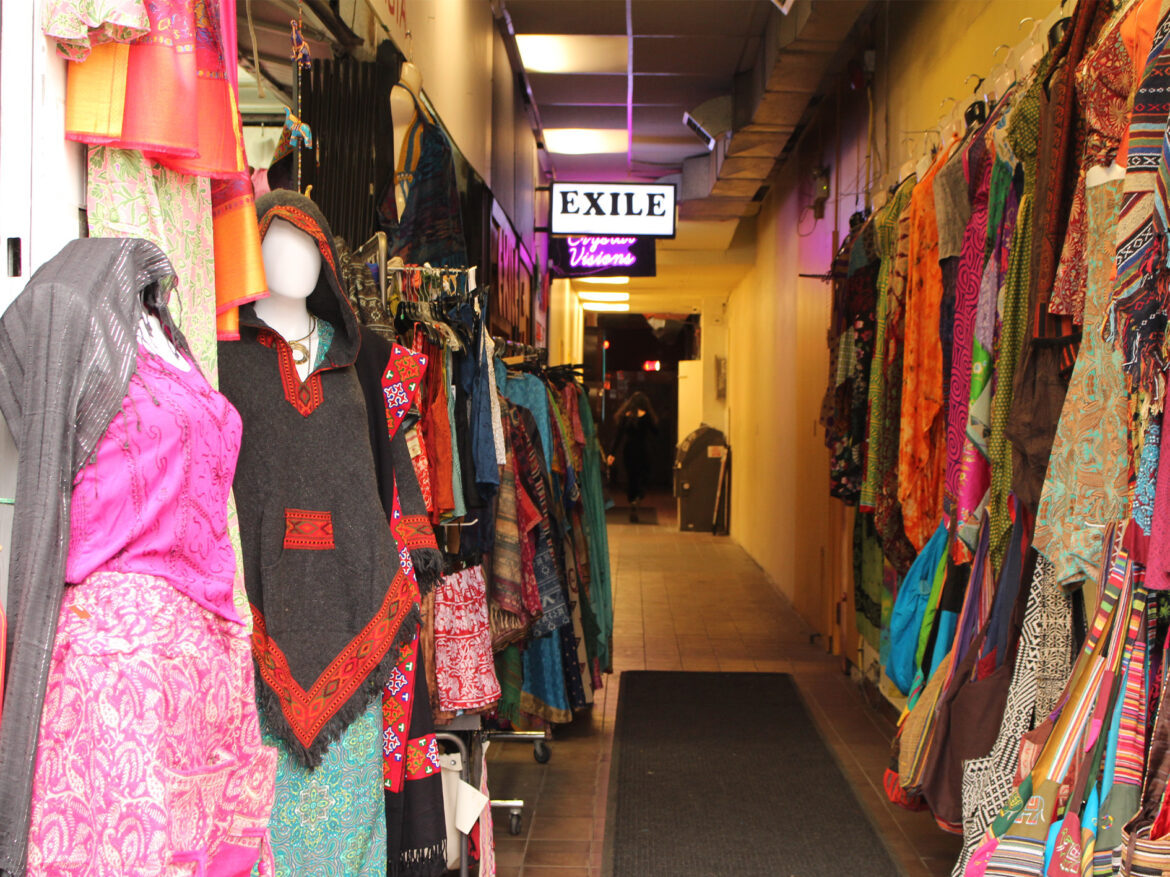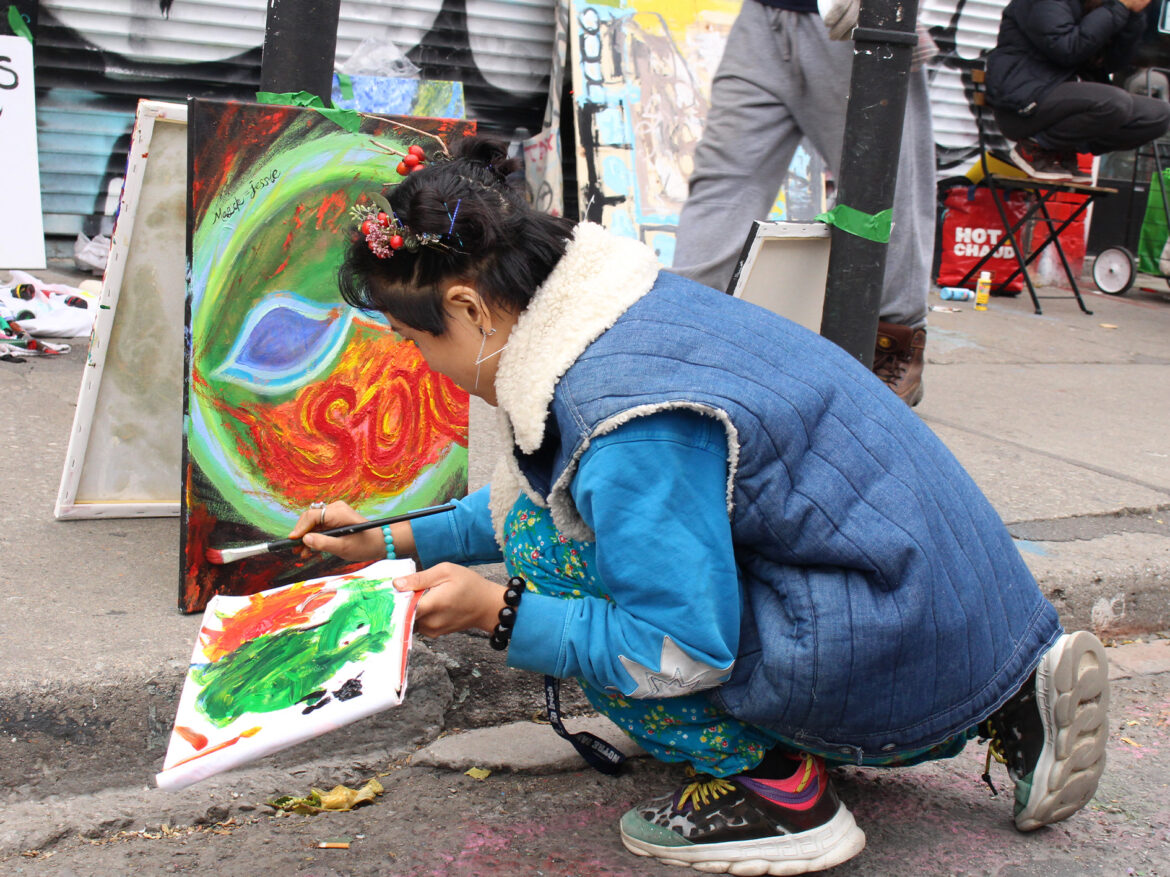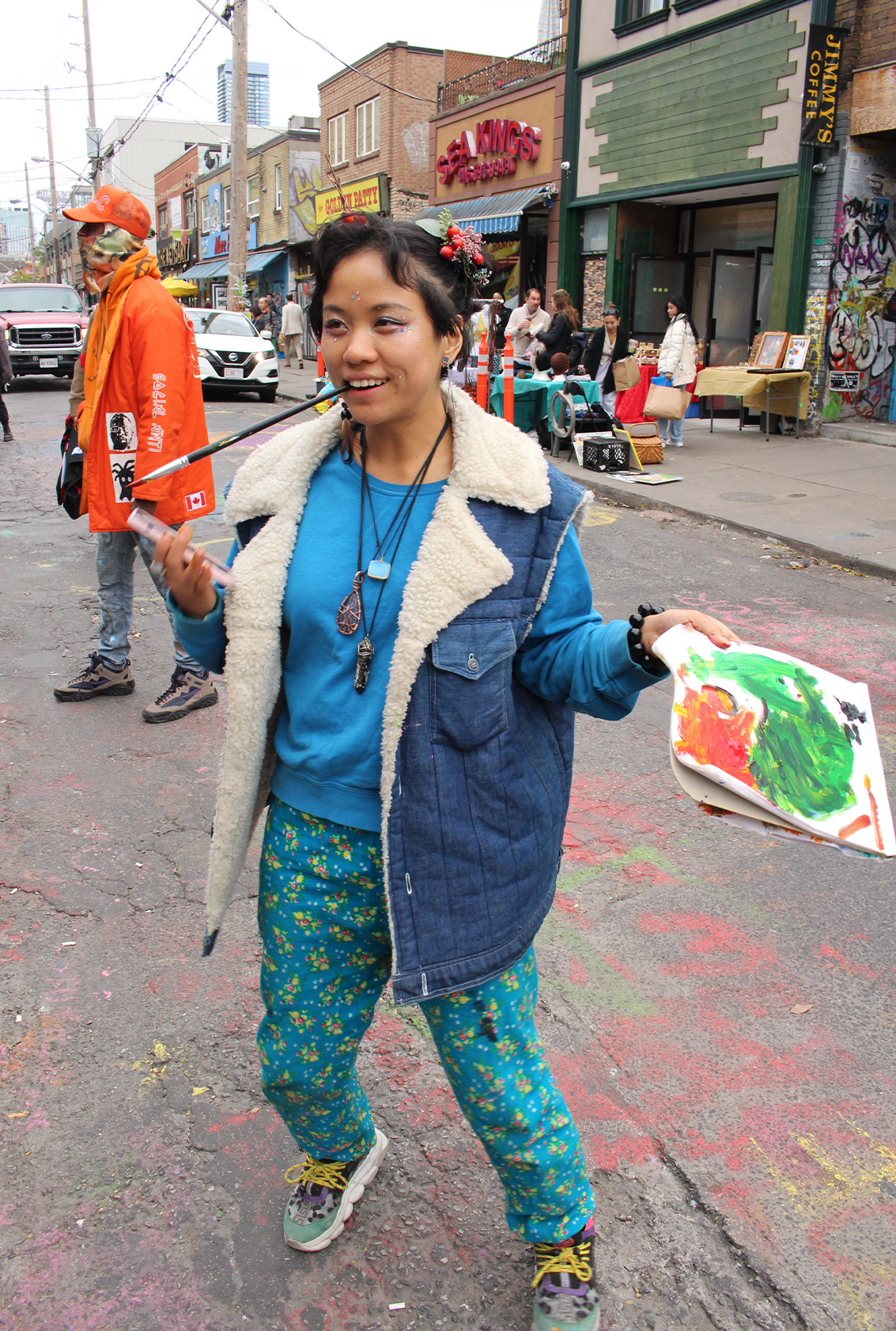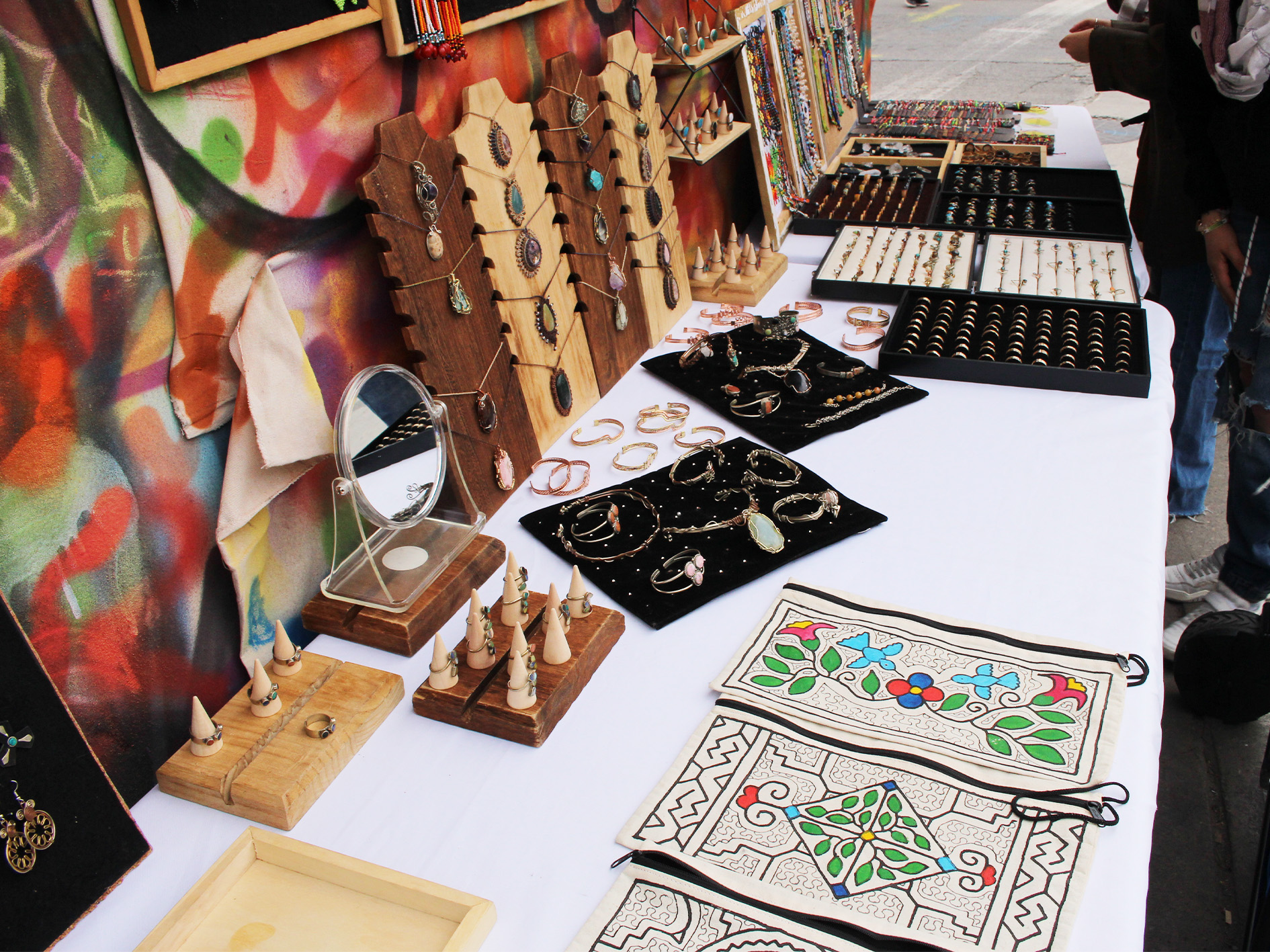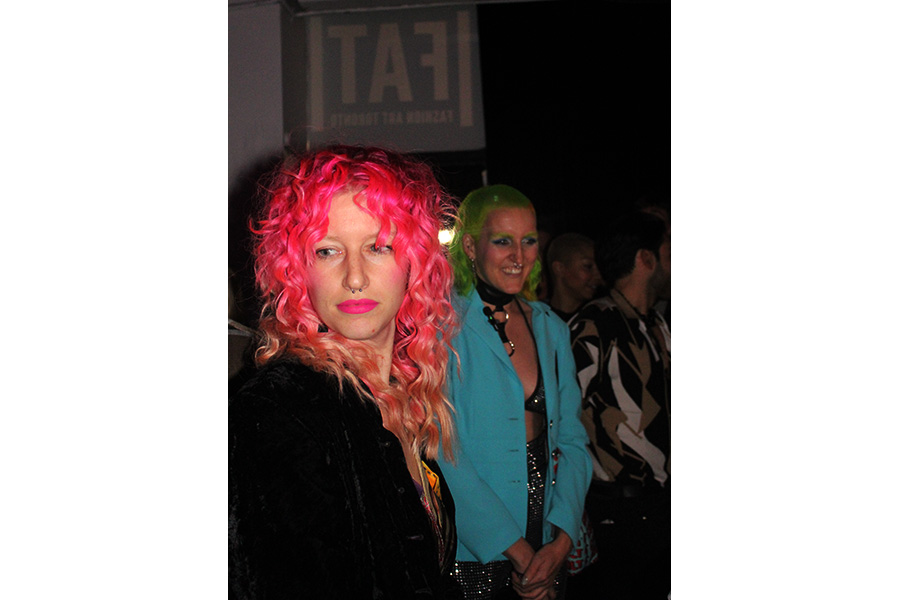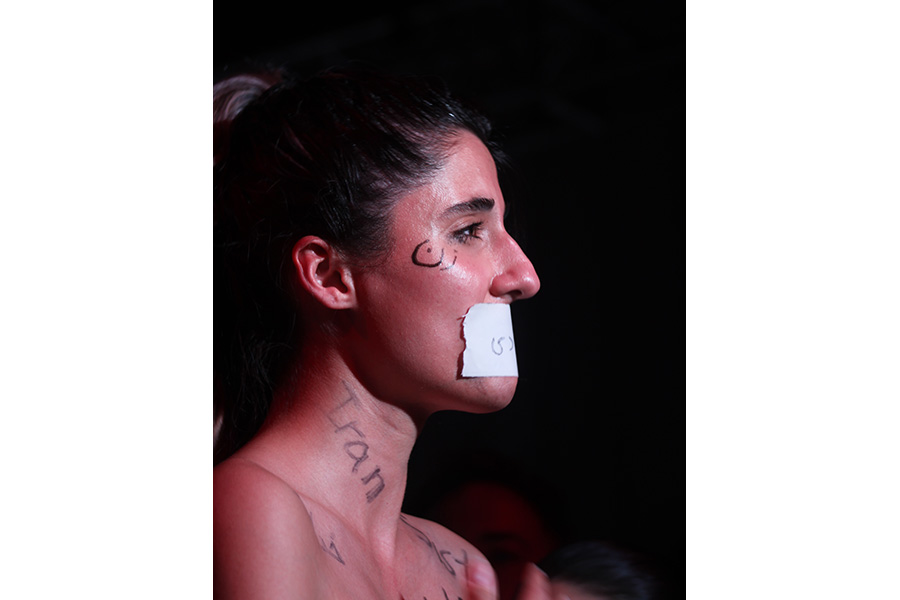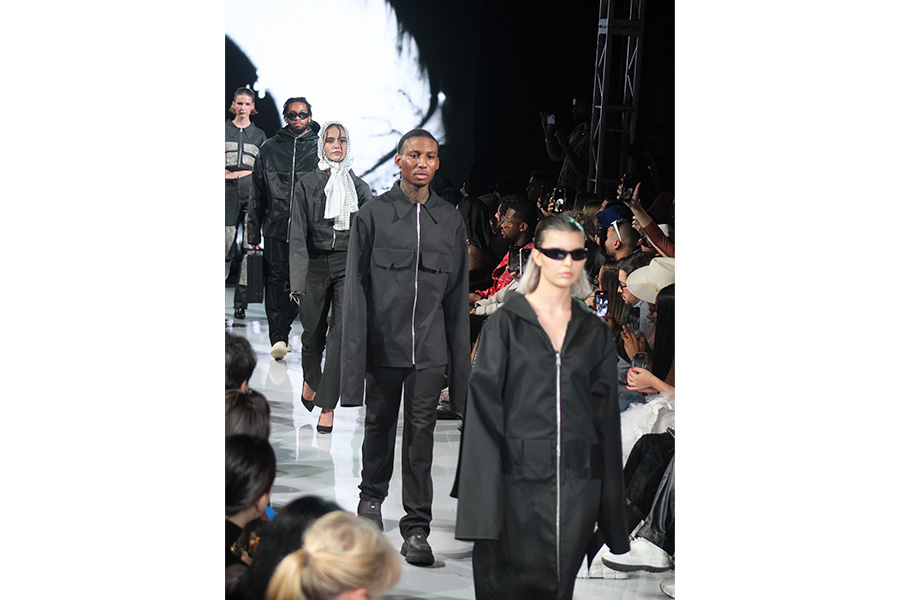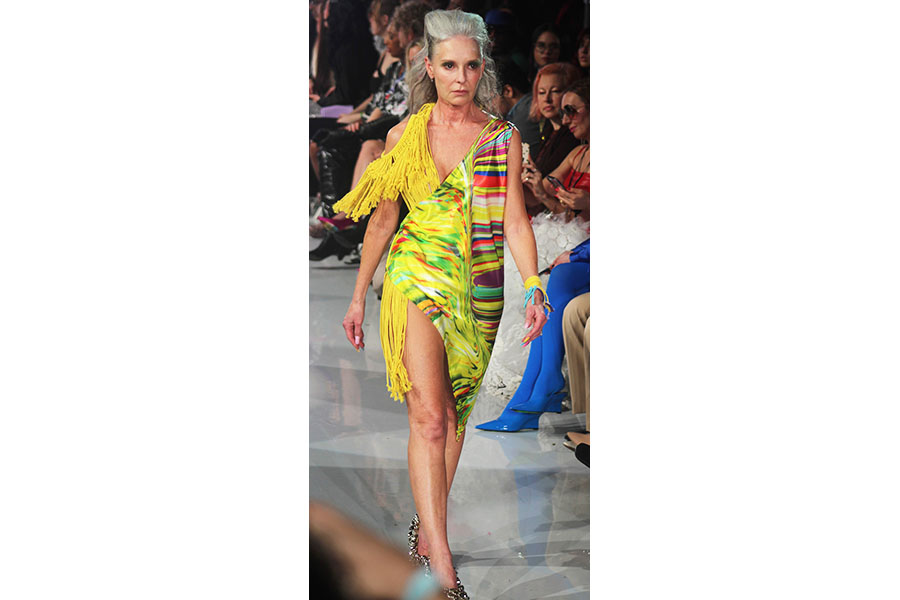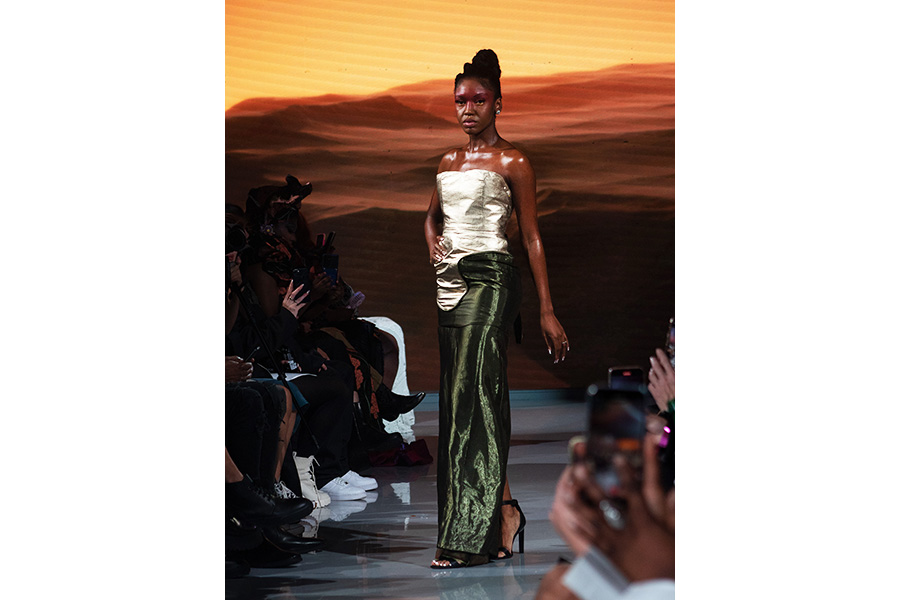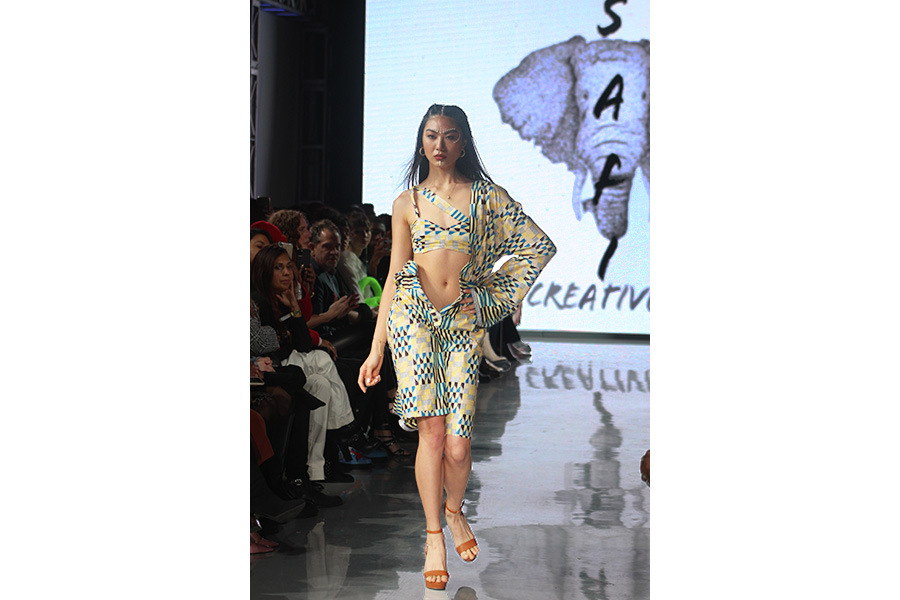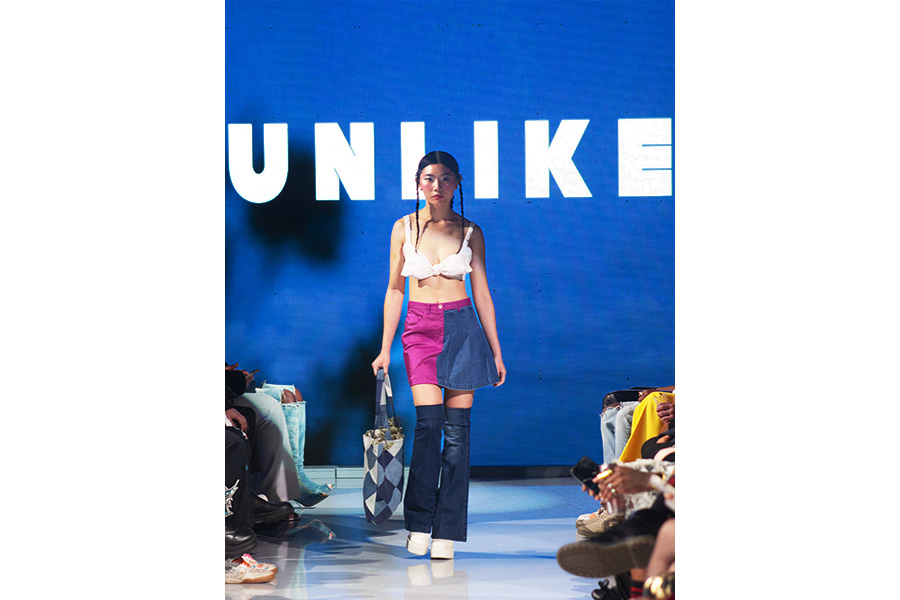By Reema Najjar
Some quintessential Toronto fashion communities have blurred into the background, but Kensington vintage retail counter-culture thrives and Toronto’s young designers are striving for a sustainable future of fashion design.
Despite the limits the pandemic has put on small businesses within the retail industry, and avenues of sustainable consumption limited for consumers, local sustainable-fashion design persists in the “post-pandemic” sphere.
Toronto Metropolitan University’s Fashion Zone x CGI Sustainability competition winners, non-binary fashion designer Charlotte Carbone and award-winning spoken word artist poet Cassandra Myers, exemplify a future of anti-colonial innovative Toronto-based fashion design. They were inspired by the goal of the contest:
“What it means to have ancestors, who we can consider ancestors, as well, the question of sustainability, that was the core of the challenge,” Carbone said.
With their award-winning garment Paisley Skin, their challenge was the use of the Khadi fabric, a traditional sustainable material originating from India.
“Our process was deeply informed by our relationships and lived experiences with our homelands and what it means to reconnect with heritage … How did our ancestors already live sustainably? And how was that wrongly stolen away from us because of colonization? Our discussions were focused around decolonizing design and sustainability, because of the capitalist pipeline that often happens with fashion and sustainability, greenwashing tactics,” said Carbone.
Cassandra Myers, having their own experiences with chronic pain, said garments that are traditional to South Asia are “less imposing” towards their disability.
“Loose Garments, that have a genderless quality, breathable, expandable but still ornate, still precious. For me adornment and garment is stepping back into something that was taken and separated from me due to the colonial project of British inter-marriage in India,” said Myers.
The Paisley Skin garment inscribed with henna features Myers’ poetry. Designer Carbone noted that the intention for their piece is not for retail. The garment is intended as art, something to be displayed in a museum.
Sustainable fashion has become a method aiming to be genderless, free of exploitation and an expression of self, for designers like Carbone and artists like Myers. And it’s artists like these two who are having a chance at design and fashion expression, with competitions funded by the Fashion Zone that create avenues of innovation for younger designers. The future of Toronto Fashion encompasses the evolution of the city in its diversity.
Courage My Love: CounterCulture Vintage
Courage My Love, established at its current location in the late 80s, is a staple in the Kensington market community as one of the longest standing second-hand vintage shops. Never out of fashion or business, unlike other local designer-owned retail stores that were part of the Yorkville scene. Originally, the vintage shop was located on Cecil St. at Queen St. West., opening in 1975. Stewart Scriver, the founder of ‘Courage My Love,’ after working as a teacher, decided to transition to the vintage market. Back in the mid-70s, Scriver would source his merchandise from general stores.
Historically, the first general stores in Ontario date back to the early 19th century and were stocked with most products imaginable. Through the evolution of mass production, and railroad construction of the 1840s, stores began to stock luxurious items, such as lace and ribbon imported from France and Europe. A handful operate today; however, with urbanization and retail most have closed down overtime. In the 70s they fed Courage My Love’s inventory.
At the time there were only three malls in Canada, according to Scriver. The general stores sold things like moccasins, handmade baskets, and racks of clothing dating back to the First World War.
“We bought everything because the previous owners of the general stores didn’t value it when we showed up. They thought it was the oddest thing. Nobody had ever done that,” said Scriver.
By the early 80s, according to Scriver, Los Angeles was in preparation for the ‘86 Olympics and film production moved to Toronto. Kathy Viera, a costume designer approached them and wanted to source costumes from their shop.
“This lady showed up [Kathy Viera] and said, ‘I’m a wardrobe mistress, and I’m doing a movie,’ and I said, ‘Oh yeah, we can do that,’” said Scriver.
Years later, seeing Viera at a party, Scriver admitted to Viera it was the store’s first time sourcing for a film. As it turns out, it was Viera’s first time doing wardrobe design as well.
By the late 80s, Scriver had moved the store from Cecil St. to its current Kensington Market location. The shop was originally called ‘Herman’ and the owner at the time, David Dordick, sold draperies, with dressmaker supplies, zippers, hooks and buttons. One floor of the building was occupied by a punk group called ‘The Ugly,’ and the bottom floor was occupied by Buddhists.
With only half of the new location stocked, Scriver proceeded with his original method of sourcing materials.
“To get stocked up, we drove down to Queen St., and there was a building going out of business, ‘Leon’s Menswear,’ just between Bathurst and Spadina. [The original owner of Leon’s Menswear] wanted to quit, he’d been a tailor for years. I looked around and counted the stopwatches, hats, cufflinks, suits and accessories.” The owner of Leon’s ended up liquidating his entire inventory in the exchange, selling Scriver everything he had for $4,000.
Courage My Love has always been the strangest place, according to Scriver, and always attracted customers.
“We’re not joiners,” said Scriver, referring to the modern retail market. He said the store remains relevant because it is “just for fun.”
“We often do things that are counter to making a profit, and somehow it works. If big retail corporations would follow our plan, everyone would have a better time.”
STEWART SCRIVER
Paying their employees above minimum wage, along with bonuses, and having original products is the authenticity that Scriver intended for. Their employees are told not to sell anybody anything — there are no sales pitches or pressure on the customers to buy. They can just experience the store’s personality. Scriver wants his customers smiling when they leave the store. And they stick to their vintage roots.
“We don’t have a brand, we just bought used or old things. We never put new stuff in the store ever,” said Scriver.
Yorkville, the once vibrant hippie market gaining the attention of Janis Joplin in the 60s, according to Scriver, started going downhill when the parents of the kids that owned the shops bought out the neighbourhood. He says, now, Yorkville is void of its history.
“They just did it for money. When you let money flow like that, you see what happens?” said Scriver, about the lack of hippie-esque roots in the neighbourhood.
Yorkville: Once a boom in late 60’s Toronto fashion-design, now lacks local talent
Throughout Toronto’s ‘Golden age of fashion’ (the 1960s-90s), three predominant neighbourhoods were where Torontonians sought their retail. Yorkville in the 60s was the home of the hippies; Kensington Market in the 70s was an avenue for smaller, locally owned second-hand retail; punk fashion defined Queen St. West in the 80s according to music journalist Denise Benson, on her blog ‘Then and Now Toronto Night Life History.
Robin Barker, a successful hairstylist, opened his salon in Yorkville in 1965. He had the opportunity to work with American designer, Marilyn Brooks. Before her arrival to the area, according to Barker, the most prominent designer was Lynne Tyrrell. Tyrell was one of the first couture designers of note in the city. Then Brooks became a legend.
In 1964, Barker worked with Brooks during her fashion show in Casa Loma.
“It was exciting to me to see fashion and, and she would always throw in some good evening gowns, but mainly she was trying to sell to the public. So it was all geared down to sell most of her clothes. But she knew what she was doing,” said Barker.
In face of the competitive fashion 60s scene in Yorkville, Brooks’ fashion designs and past presence in the neighborhood held influence, said Barker. However, he said the natural flow of the industry and her battle with Alzheimer’s led to her ultimate retirement and no one has taken her place.
Toronto’s fashion future potential
Designer Kyle Gervacy believes fashion consumers in Toronto do not appreciate the talent that lives in the city today. He also believes that there are not enough creative spaces in Toronto for those working in the modern fashion world. In 2020, 95% of apparel bought in Canada was imported, standing at a $12.0 billion dollar value, only $2.4 billion of retail bought was nationally produced, according to Stats Canada. Gervacy featured at a future of fashion panel held at Freda’s downtown store Nov. 29, 2022, on the heels of the return of Toronto Fashion Week.
Local retailers and fashion design in Toronto call for government supports
The Ontario Arts Councils provides funding for operating programs, potentially an opportunity for fashion designers. Eligibility factors include “having proof of sound financial management,” a privilege not many small businesses can account for post-pandemic. Many locally owned businesses, including some in Kensington Market, were forced to close down. Without the facilities to effectively move online, they suffered.
Barker, who found support at the start of his hairstyling career with the Guild of Hair Design, says that policy change needs to be emphasized to encourage funding for new local fashion design associations.
“If you had a competition, you had 50 entries, I’d like to see five or 10 winners. Those winners get financed by the government. And then you could find somebody who could do manufacturing and those winners would get to manufacture one of their dresses and, and they’d get paid for it, obviously … but the government would be funding the manufacturer to do it. It’s not gonna happen by people,” said Barker.
